Like you, I have a lot to remember, and even more yet to learn. Because of this I regularly employ “cheat sheets” to summarize important, but easily forgotten, information that is critical to my work. Most of my cheat sheets are in a shared Evernote notebook so my Baselodge colleagues can also easily access them.
In this case I thought I would share with the broader world my introduction to Gerber files.

What are Gerber Files? A Brief History
I am a language guy. I need to know why things are called by certain names or words. This helps me remember more easily. Before we determine what Gerber files are, let’s determine why they are called “Gerber” files. The files are named after the company that originated the first version of them. That company was Gerber Systems Corp., a manufacturer of photoplotters. The Gerber specification was developed to drive their plotters. Now for the what. If you want to track the history of Gerber Systems Corp and its intellectual property, you can do that, but what interests me is that this file format became the standard of the printed circuit board (PCB) manufacturing industry. PCB fabrication is an image-driven process, and as such is a good fit for files that provide image information. Since PCBs are composed of various layers of material that can be represented by a 2D image, the specific layer design information can be communicated in these Gerber files. For example, you might have one file to represent the layer for the top copper, one for the bottom copper, one for the soldermask, one for the silkscreen, etc. Typically, all of these files are archived together into a .zip file that can be easily shared.
As technology got more sophisticated, the original Standard Gerber (or RS-274-D), designed to drive photoplotters, was replaced by a new Extended Gerber (or RS-274X). This latter standard is the one used today.
So, to be clear, Gerbers pertain to what we call bare boards, PCBs, or board fabrication. Printed circuit board assembly (PCBA or PCA) refers to the bare board PLUS all of the components electrically connected together. You cannot have a functioning board without both PCB and PCBA, so Gerbers are relevant for both. The bare board is manufactured from the data contained in Gerber files. Got it?
How Are They Generated?
Gerber files are created as exports from the computer-aided design (CAD) system in which the board’s physical design was done. For example, Cadence® Allegro® and its competitors output Gerber files as manufacturing files or artwork files. The designer has a lot of freedom to make choices about various aspects of the generation of the artwork. When the final button is clicked to create the artwork, it usually doesn’t take long for the process to complete.
What Does a Gerber File Look Like?
Since I am on the manufacturing side, when I receive Gerbers it is because a customer wants us to evaluate their design and provide a quotation to fabricate their board. It is always with a bit of excitement that I open the .zip archive to see what is inside. The first thing I notice is a listing of the files in the archive. It might look something like this:
Example 1
- MezzanineCard-Back.gbl
- MezzanineCard-Comments.gbr
- MezzanineCard-Drawings.gbr
- MezzanineCard-Front.gtl
- MezzanineCard-Ground.gbr
- MezzanineCard-H1_Signal.gbr
- MezzanineCard-Mask_Back.gbs
- MezzanineCard-Mask_Front.gts
- MezzanineCard-PCB_Edges.gbr
- MezzanineCard-Power.gbr
- MezzanineCard-SilkS_Back.gbo
- MezzanineCard-SilkS_Front.gto
- MezzanineCard-SoldP_Back.gbp
- MezzanineCard-SoldP_Front.gtp
- MezzanineCard-V2_Signal.gbr
Example 2
- ASY.art
- BOT_MASK.art
- BOT_PASTE.art
- BOT_SILK.art
- FAB.art
- L1-TOP.art
- L2-BOTTOM.art
- TOP_MASK.art
- TOP_PASTE.art
- TOP_SILK.art
Example 3
- EDGE_PORT.cmp
- EDGE_PORT.plc
- EDGE_PORT.sol
- EDGE_PORT.stc
- EDGE_PORT.sts
- EDGE_PORT.drd
Notice that each of the files listed above has a file extension. I went through a phase of wanting to know what each of these extensions “mean.” Remember, I am language-oriented. Some of them make some sense. The extension .art means it’s an artwork file. The extension .sol usually refers to a soldermask file. The .drd extension refers to drill information. However, for the sake of sanity I quit trying to make logical sense of the naming conventions of the extensions. The filename to the left of the extension is determined in large part by the designer at the point of exporting the Gerber files. Some designers make it easy to understand the contents of the files. Examples 1 and 2 are fairly easy to figure out. Example 3, however, is anyone’s guess.
Why do each of these examples have different nomenclature on the file extensions? Simply because each of them was generated out of a different CAD system. The good news is that the PCB house that will view and estimate the cost of the boards will have no trouble viewing the files and getting what they need.
How are they Viewed and Used?
Again, PCB houses have the necessary software to read and evaluate the Gerber files. Our excellent board house, South Bay Circuits, will open the zip archive and evaluate the number of layers, drill information, soldermask, silkscreen, etc. very easily.
As a technical rep, I also like to take a look at what the board looks like. There are good free Gerber viewers available for this purpose. For example, I use GC-Prevue for Windows. There are also online viewers like Online Gerber Viewer.
Conclusion
The mystery behind Gerber files is ultimately resolved in understanding what information they convey and how to open and view them. Since they are the files used to quote and fabricate bare circuit boards, they are critical artwork files.
If you have your Gerbers ready and want a quote, please use our “Request a Quote” button to submit them to us. Whether a quick-turn or production quote, we would love to compete for your business.
